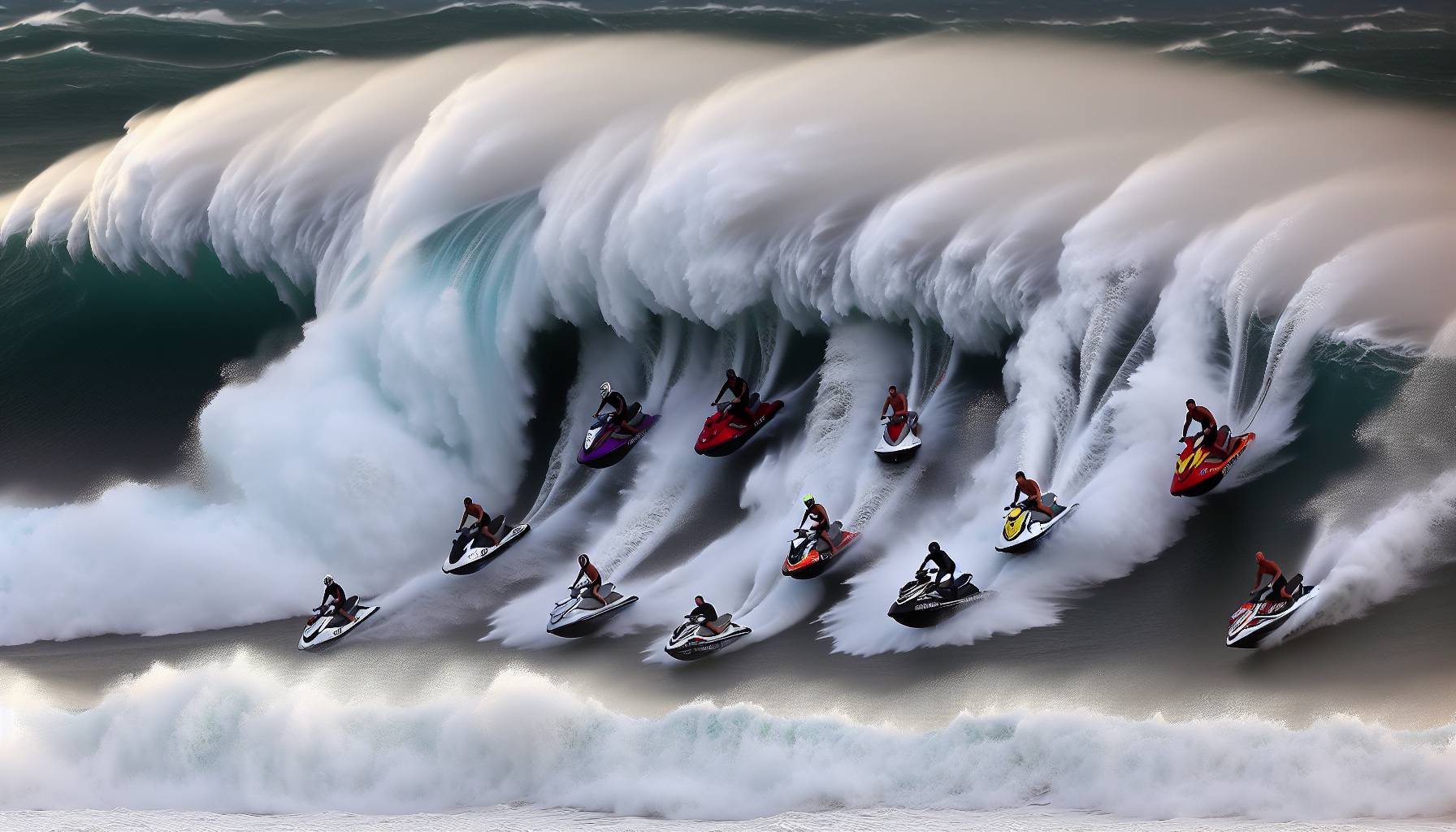
Cyclone Alfred’s current status
Cyclone Alfred has been downgraded to a category three storm as it continues to track across the Coral Sea. The latest meteorological reports indicate that the system has slightly weakened due to cooler ocean temperatures and increased wind shear, reducing its intensity from its previous category four status. However, the cyclone remains a significant weather event, with sustained winds of approximately 165 km/h near its core and gusts reaching up to 200 km/h.
The Bureau of Meteorology (BoM) has issued updated forecasts, showing that Alfred is moving in a southwesterly direction. While the storm’s intensity has decreased, it still poses a considerable threat to coastal regions, particularly in Queensland and northern New South Wales. Meteorologists are closely monitoring its trajectory, as any shifts in its path could influence the severity of its impact on coastal communities.
Heavy rainfall and large ocean swells are already being recorded along parts of the eastern seaboard, with wave heights exceeding five metres in some areas. Surfers and beachgoers are being urged to exercise caution, as unpredictable currents and dangerous surf conditions are expected to persist over the coming days. Authorities have warned that while the cyclone’s downgrade may seem like good news, the storm still has the potential to cause hazardous conditions both offshore and along the coastline.
Further updates from the BoM and emergency services will provide more clarity on Alfred’s progression, with the possibility of additional changes in intensity as it moves closer to the Australian mainland.
Potential impact on Australia’s coast
As Cyclone Alfred continues its approach, coastal communities along Queensland and northern New South Wales are bracing for significant weather impacts. Meteorologists predict that while the cyclone may not make direct landfall, its outer bands will bring heavy rainfall, strong winds, and dangerous surf conditions to large stretches of the eastern seaboard. The system’s interaction with existing weather patterns could also lead to flash flooding in low-lying areas, particularly in regions already experiencing saturated ground from recent storms.
For surfers, the cyclone-generated swell presents both an opportunity and a serious risk. Wave heights are expected to peak between five and eight metres in exposed locations, with some offshore reefs potentially seeing even larger sets. While experienced big-wave surfers may be tempted to take advantage of these conditions, authorities are urging extreme caution. The combination of powerful surf, unpredictable currents, and strong onshore winds could create treacherous conditions, even for the most skilled riders.
Beach erosion is another major concern, with prolonged high-energy swell likely to reshape sections of the coastline. Some beaches may experience significant sand loss, leading to unstable dunes and potential damage to coastal infrastructure. Local councils are monitoring erosion hotspots and may implement temporary closures to protect public safety.
In addition to the surf conditions, strong winds associated with Alfred could lead to hazardous boating conditions. Marine authorities have advised against unnecessary offshore travel, as large swells and gale-force winds will make navigation extremely difficult. Ports and marinas along the coast are preparing for potential storm surges, which could cause localized flooding in low-lying waterfront areas.
As the cyclone progresses, authorities will continue to assess its impact and provide updates on any changes in its trajectory. Residents and visitors in affected areas are encouraged to stay informed through official weather advisories and to exercise caution when venturing near the ocean.
Emergency response and safety measures
Emergency services and local authorities are ramping up preparations as Cyclone Alfred continues to influence weather conditions along the eastern coastline. The State Emergency Service (SES) has issued warnings for residents in low-lying areas, urging them to be prepared for potential flooding and storm surges. Sandbagging stations have been set up in vulnerable locations, and evacuation plans are being reviewed in case conditions worsen.
Surf lifesaving organisations have also increased patrols along popular beaches, with some locations already implementing temporary closures due to hazardous surf. Lifeguards are advising beachgoers to stay out of the water, as strong rips and unpredictable wave patterns pose a serious risk. Even experienced surfers are being cautioned against paddling out, as the cyclone-driven swell can create dangerous conditions that are difficult to navigate.
Authorities are also closely monitoring the impact on coastal infrastructure, including piers, jetties, and beachfront properties. Local councils have deployed crews to assess erosion-prone areas and reinforce vulnerable sections of the shoreline where possible. Residents living near the coast are being advised to secure outdoor furniture and prepare for potential power outages caused by strong winds.
For those planning to travel, transport officials have warned of possible road closures due to flooding and debris. Motorists are urged to avoid unnecessary travel in affected regions and to check for updates on road conditions before heading out. Airports in coastal cities are also monitoring the situation, with some flights already experiencing delays due to adverse weather.
Emergency hotlines and community support services are on standby to assist those in need, and authorities are encouraging residents to stay informed through official channels such as the Bureau of Meteorology and local emergency services. As conditions evolve, further updates will be provided to ensure public safety remains the top priority.
Cyclone Alfred downgraded to category three
Alright, legends, here’s the latest on Cyclone Alfred—he’s been knocked down a peg to a category three storm. That means he’s still packing a punch, but not quite the monster he was shaping up to be. The Bureau of Meteorology reckons the winds have eased off a bit, but don’t go thinking it’s all sunshine and smooth waves just yet.
We’re still talking about gusts strong enough to rip the roof off your local fish ‘n’ chip shop, and the swell? Let’s just say if you’re keen for a surf, you might want to double-check your insurance first. The ocean’s got that wild, unpredictable energy—one minute it’s serving up the ride of your life, the next it’s trying to send you to New Zealand.
For the fishos out there, this means the barometer’s still bouncing around like a kangaroo on a sugar rush. Some reckon the bite could fire up before the system moves on, but good luck getting out there without getting blown sideways. If you’re thinking of wetting a line, maybe stick to the estuaries and let the offshore madness settle.
So, while Alfred’s lost a bit of his bite, he’s still got enough grunt to keep things interesting. Keep an eye on the updates, stay safe, and if you do head out, make sure you’ve got a solid plan—because Mother Nature doesn’t do second chances.
Potential landfall along Australia’s coast
Now, about where Alfred’s planning to crash—forecasters are still tossing up a few possibilities, but the Aussie coastline is definitely in his sights. The latest models suggest he could make landfall anywhere from northern Queensland to the Top End, and if that happens, we’re in for a wild ride.
For the surfers, this means some serious swell is on the way. We’re talking rogue sets that could turn your local break into something straight out of a big-wave comp. But before you wax up the board, remember—cyclone swells don’t play nice. Rips will be gnarlier than your mate’s last wipeout, and the currents could drag you halfway to Bali if you’re not careful.
Fishos, you might want to keep an eye on the pressure drop. Some reckon the bite goes off just before a big system hits, but getting out there could be a mission. Offshore’s looking sketchy, and even the estuaries could turn into a washing machine if Alfred swings in close. If you’re dead set on wetting a line, maybe stick to the sheltered spots and keep the tinny tied down.
And for the adventurers out there—if you’re thinking of chasing the storm for a bit of thrill-seeking, just remember that cyclones don’t mess around. Flooded roads, flying debris, and winds strong enough to send your swag into orbit aren’t exactly a good time. Best bet? Keep an eye on the updates, have a plan, and maybe save the heroics for another day.

